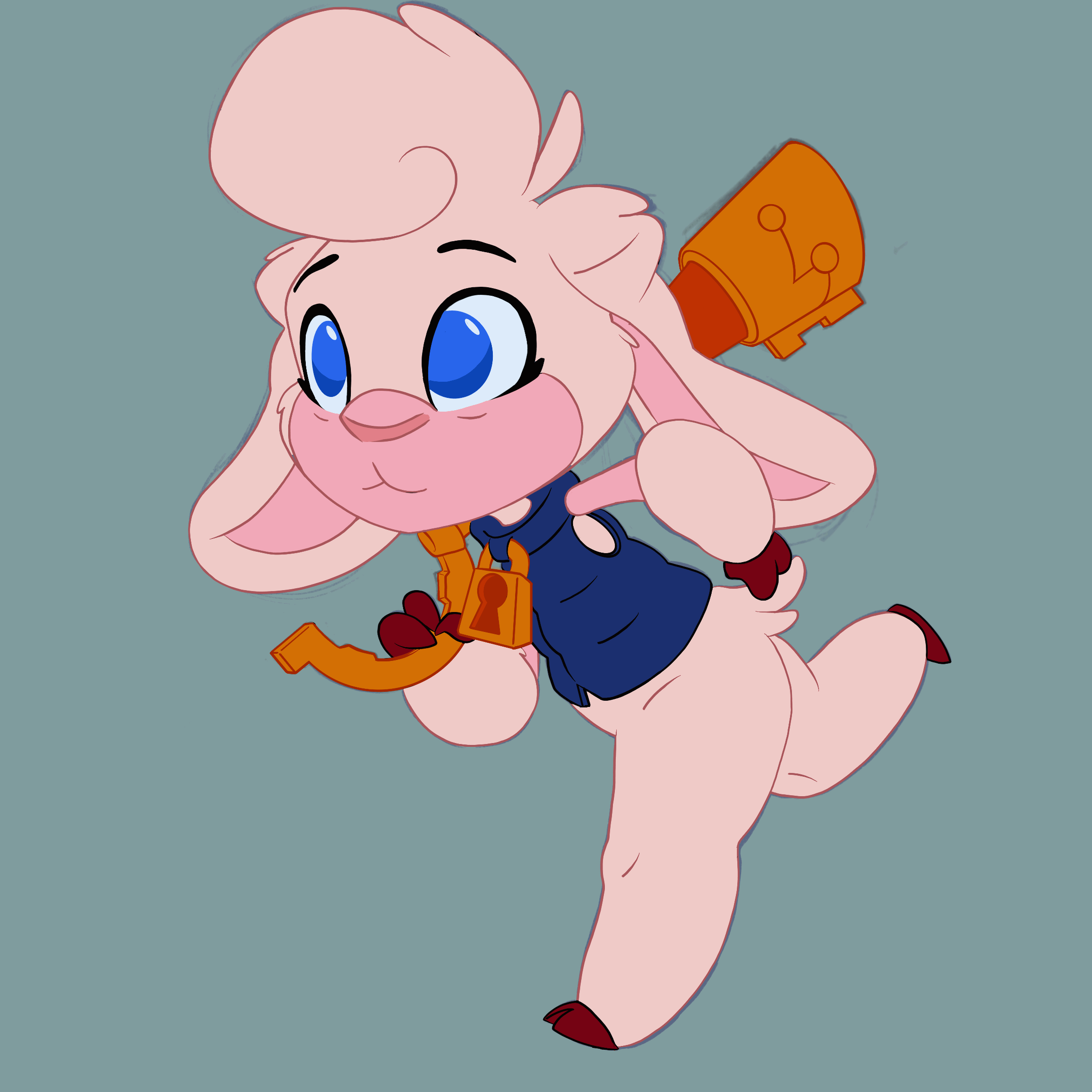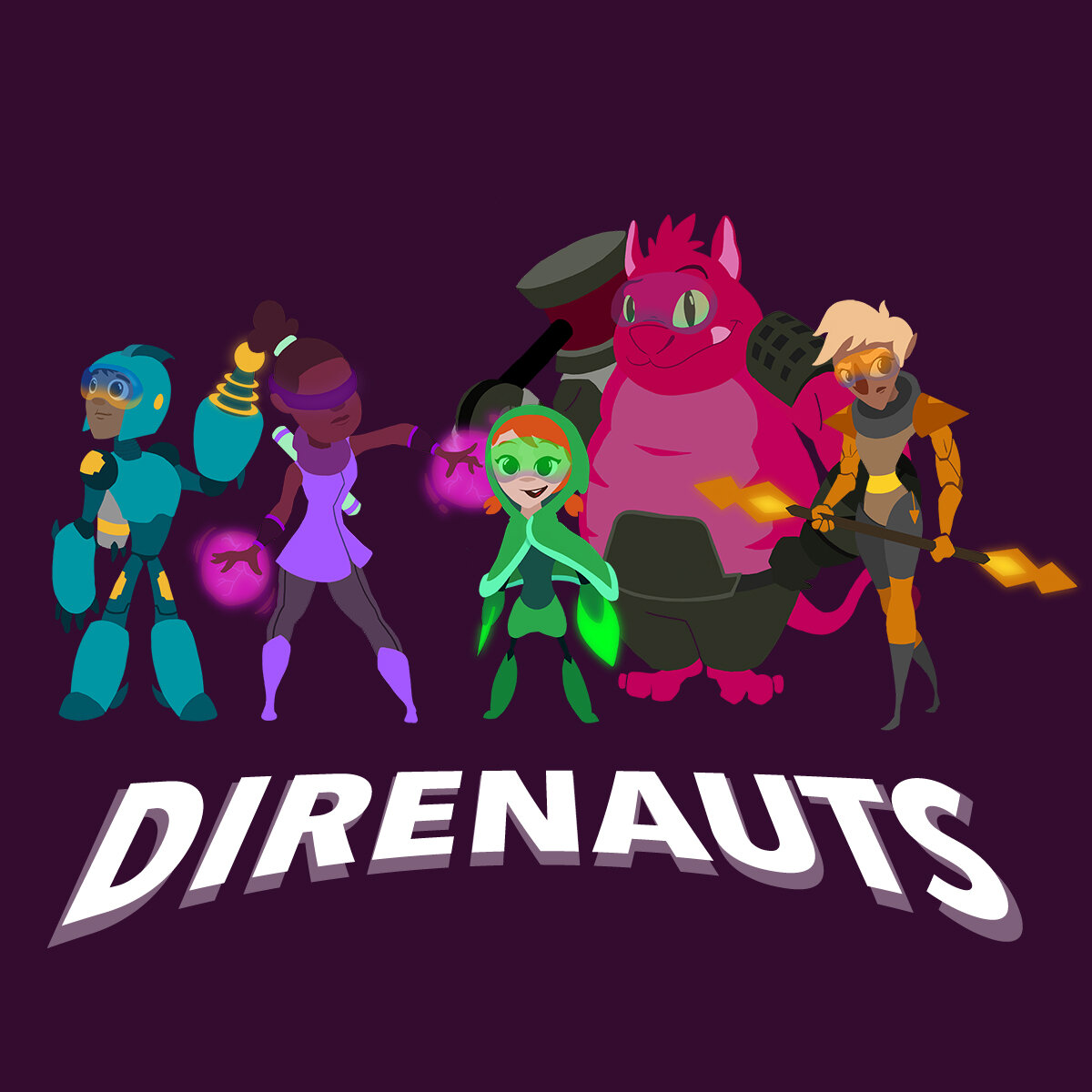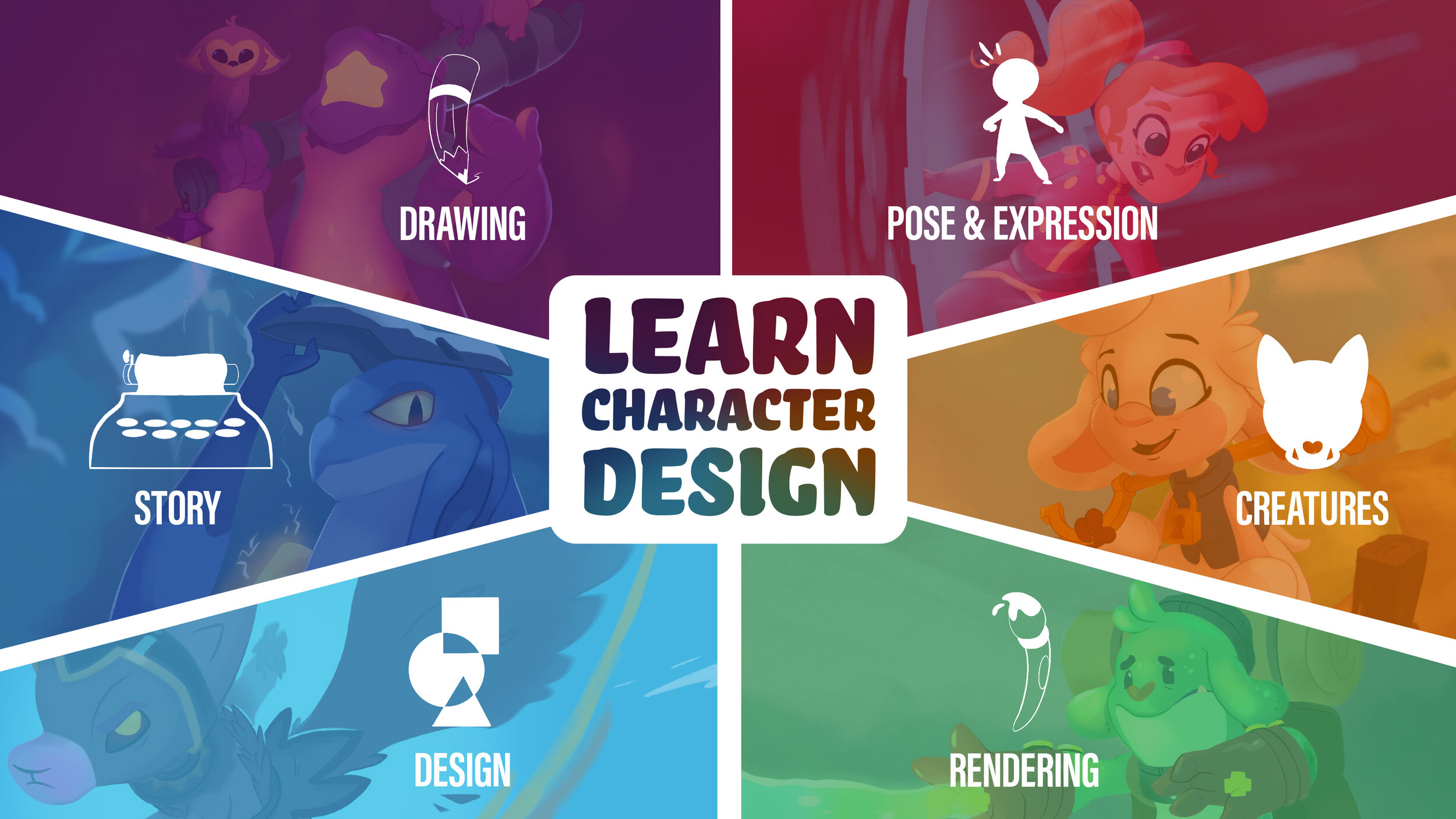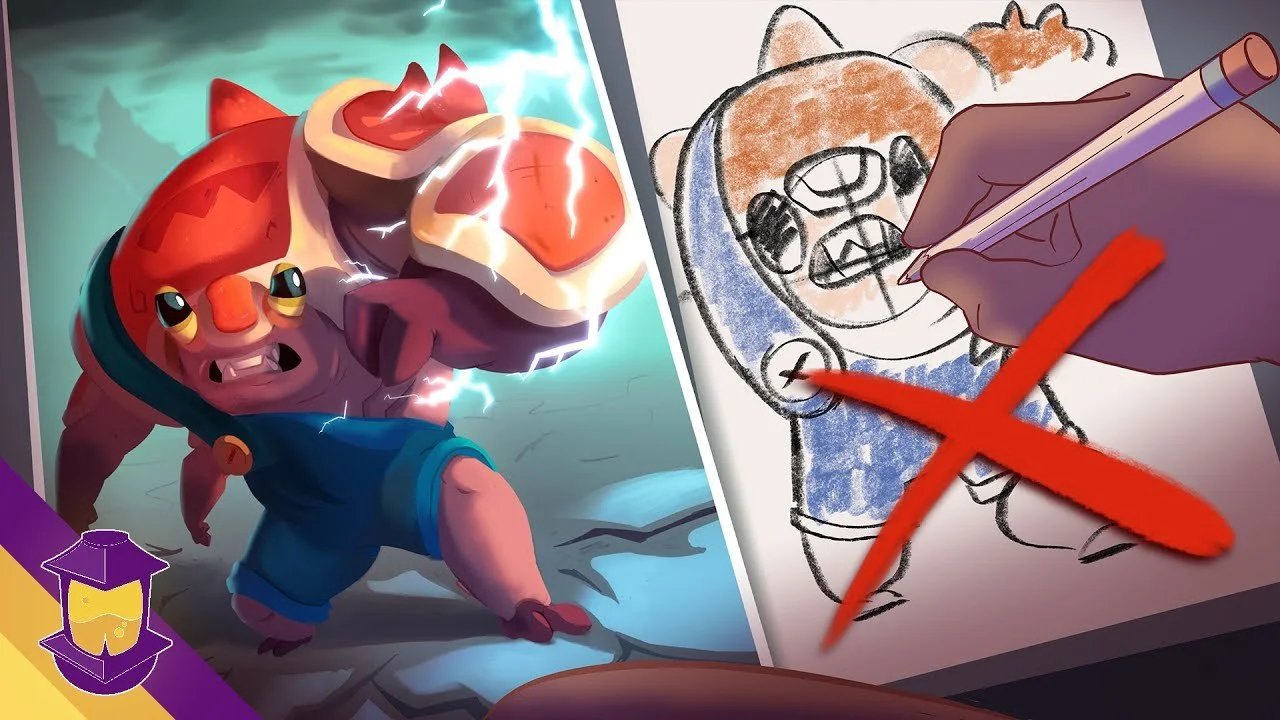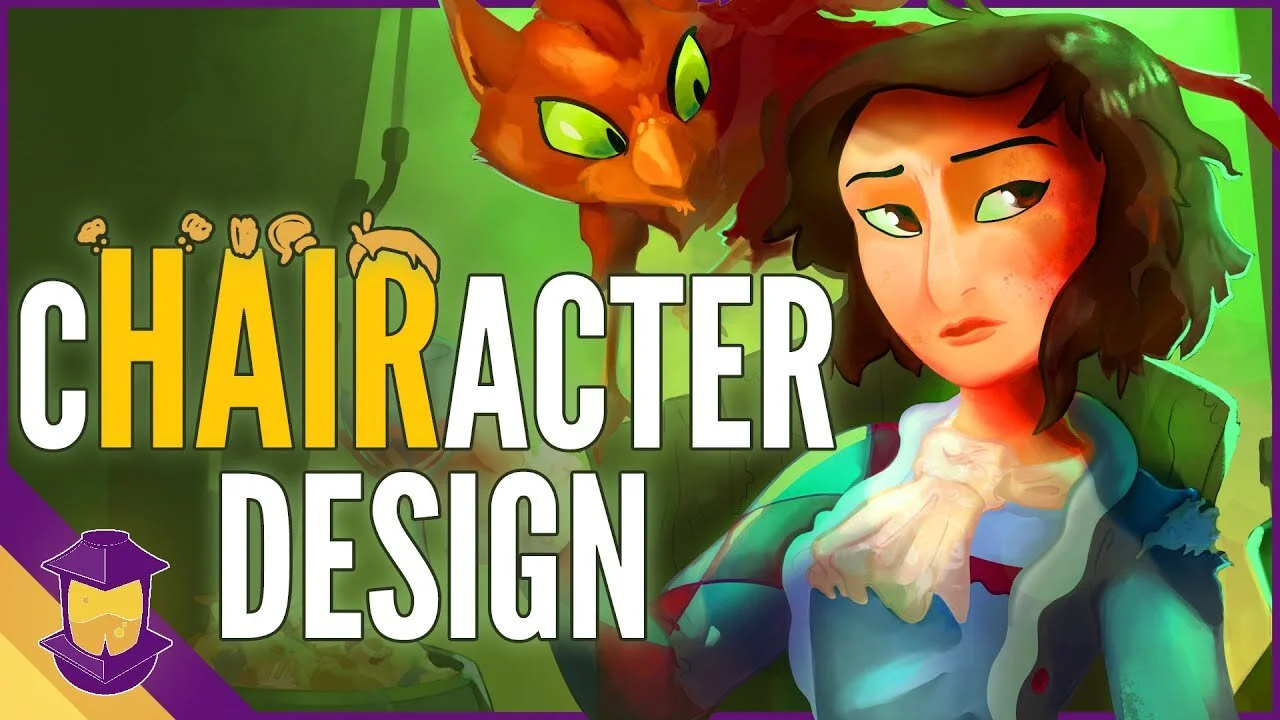I’m here to tell you one thing, and one thing only. You ready? Experiences give you experience. Wow.
Building up your artistic skills is often a roundabout, confusing, and even tedious process, where we often feel like we’re stuck or plateauing. It’s easy to get into a rut with our work and practice.
The main takeaway that I’d like you to gain from this video is just how valuable it can be to leave your comfort zone or to supplement your main skills with something new.
I have had at least ten years of experience working as an artist, and I’ve worn a lot of different hats during that time. There are ten experiences involving projects, mistakes, and opportunities that dramatically helped my art skills and career.
They’ve made me a better artist, character designer, and storyteller. And these experiences, if tested for yourself, can help you too! And that’s my goal, always: to help you in your journey as an artist.
Watch this video now!
Experience 1: Learning How to 3D Model
A seven-year old Brookes already drawing through his work shift.
When I was ten, I saw an ad for a local class teaching 3D animation. The age limit was something like thirteen, and my mom called and vouched for little eleven-year-old me and I ended up in the class.
Over the years, continuing to learn things like 3D modeling, sculpting, rigging, rendering, lighting, and animating, have not only helped the projects I’ve worked on that are directly 3D, they’ve also been incredibly helpful for my understanding of 2D art.
3D models are essentially a 2D drawing made with perfect perspective that you can rotate around. All of those polygons come together just like the principle of Construction in 2D art.
Not only is this helpful when making a character design that will be modeled, I genuinely feel as I draw like I’m modeling or sculpting something that makes reasonable sense in space.
So, what can YOU take away from this?
Even if you just get a chance to play with some primitive wireframe shapes in a free program like Blender, it can really improve your understanding of shapes and perspective.
Looking for some advice on 3D animation and modeling? Check out this video here: How To Make Easier Props, Backgrounds & Environments (Use 2D to help your 3D)
Want to master your rendering skills? Check out Module 6: Rendering from the Learn Character Design Course.
Experience 2: Generating Work Regularly Through a Webcomic Series
Jumping from eleven to sixteen, I spent a couple of years regularly updating a 3x a week webcomic called Also, Bagels.
Regularly generating new work like that, by itself, was a great lesson in work ethic. I promised my work to an audience, and that sort of obligation held me accountable to regular practice.
What this experience taught me was the importance of telling stories with your characters, drawing them over and over, improving as you go, and holding a mirror up to yourself and the way that you communicate. What does that last part mean?
A lot of times, ideas for stories (or even jokes!) play out one way in our head, but it’s a whole other thing to see the way that people respond to it. So this process helped me improve the translation of my stories and jokes.
So, what can YOU take away from this?
Now, by no means am I saying that everyone needs to start a project that requires sharing a new installment every week to the public. But there’s a lot to be learned from making small, bite-sized pieces of visual storytelling to put yourself through the paces of drawing and telling stories.
Is making a comic is precisely your goal? If so, here is a great playlist of videos to help you through the process: Let’s Make A Comic!
Experience 3: Working at a Small Animation Studio
Let’s fast-forward to a point where I worked at a small animation studio, and the experience was storyboarding and then pitching that to the other members of the team.
Storyboarding, especially when you’re working from someone else’s script or idea, is a huge way to learn about the placement of characters in a scene, movement and action, the expressions of the characters—all while thinking about how they will translate to motion.
But pitching— which is where you hold up all of your boards in front of everyone else in a meeting and basically tell your story from image to image of the board— was really valuable, by which I mean, initially terrifying.
See, especially when I was younger, I would have a really good idea of what I wanted to communicate in my head, but then would freeze up as I got up in front of other people. Maybe you’ve experienced the same short-circuiting yourself.
I learned from my first pitch that it was really helpful to have a SECOND PERSON who would act out the dialogue of your boards because otherwise, you’re hopping between narrating and describing, to the voices.
Even if you don’t have a group of people to pitch to, there’s a reason why storyboards, and the timed version called “animatics”, are so valuable to have made for a project.
So, what can YOU take away from this?
There’s a lot to be learned from the economics of visual storytelling from storyboarding. When there’s no time to draw out detailed, rendered versions of characters hundreds of times on boards that might get thrown out, you need an economic and effective alternative. And when you need to also learn quickly, what is the simplest but clearest way to convey your idea? Storyboarding.
Looking for some tips on improving your storyboarding process and overall visual storytelling technique? Check out my video: Can You Get Better at Visual Storytelling?
Looking for guidance on how to better translate your character’s poses or expressions to your audience? Check out Module 4: Pose and Expression from the Learn Character Design Course.
Experience 4: Animating a 2D run cycle
Next up is hand animating a 2D run cycle and 2D animation in general. Nothing helps a character designer or anyone planning to draw a character more than a single time better understand the shapes and motions of their character like traditionally animating them.
Here, for example, is a run cycle of Jacqueline for the game we’re developing called Shackleton.
So, what can YOU take away from this?
Not only does animating help you understand timing, movement, arcs, and clear motion, you’re also forced to draw and redraw your characters in a way that makes sense.
Animating your characters on the iPad Pro? Here’s a helpful video on How To Create CHARACTER ANIMATION in Procreate on the iPad Pro!
Experience 5: Painting Still Lifes
Hey, you guys were around for number 5! This experience was actually painting still lifes with acrylics, which I did with a very limited number of paints.
My background has often been in line art, and digital art, where the value is in conveying an image with precise shapes and tons of control. With painting though, you’re forced to build up different pigments without being in control of their value, or being in control at all the same way that you can with a color picker, which is awesome, tbh.
With physical mediums of any kind, and especially paint, there’s an element of making-the-best-with-what-you’ve-got involved. There are visual tricks ( for a lack of a better word) that you start to understand when you realize how relative light, color, and pigment are within an image.
So, what can YOU take away from this?
You learn so much about design, light, contrast, and more from dealing with a medium as variable as paint. I definitely need to take some time to do this again, and YOU can do this very easily, I highly recommend it. And bonus? Paint and canvas are super cheap.
Here’s the full video on this still life process right here!
And here’s a video on How to Draw 10X BETTER with Reference Studies
Experience 6: Producing A Single-Issue Comic
You might be familiar with this comic, the one you know as Parcel: Stitch in Time.
Long-form comics like this are a completely different beast from the comic strips I had made as a teenager.
I went through tons of iteration and exploration with what the story was, what the conflict was, etc.— and that was all before the execution of this project!
In fact, I ended up getting about 75% through it to then start over.
Comics like this make you realize you have to make everything that you see. The backgrounds. The characters from different angles. You wrote it, you draw it.
Now that it’s a few years old there are SEVERAL things I would improve upon, but it’s a finished, released project and I learned a ton that’s carried through to the projects I’m working on now.
So, what can YOU take away from this?
Making a comic, long-form or otherwise, is a great challenge. You are forced to see your characters from different angles and therefore better understand how your literal and visual story relate to one another.
Here’s The Fastest Process for Making Comics in Photoshop
Looking to master both basic and advanced drawing techniques? Take Module 1: Drawing in the Learn Character Design Course.
Experience 7: Teaching Art
The seventh experience is one that you really can do if you know something that will help the person who may be a step behind you.
Again, I’m not saying you have to do what I do. You don’t have to make video critiques and weekly videos for 5 years as well as a course to get the value from showing someone else how to do something.
When you teach someone an art concept or you help someone out with something they’re struggling with, a couple of things happen:
You gain empathy XP. It requires empathy, to think about where this person is, to put yourself in their position, and figure out what would help the most.
You challenge your own beliefs. When you teach a concept, you have to put something into words, and inadvertently, you need to challenge the things that you believe and why you believe in them.
So, what can YOU take away from this?
Well, I can say from personal experience that while teaching certainly has its struggles and brick walls, it’s incredibly fulfilling, satisfying work. There’s no better feeling than helping another artist out (and bonus, in doing this you help yourself out too).
Check out all educational videos from Character Design Forge right here!
Experience 8: Tabling at Comic-Con
Number 8 is tabling at comic cons with the printed books of those early Also, Bagels comics.
I ended up doing fairly well in selling, engaging with people, but I also got a really good lesson in perspective that it’s harder to see online when it comes to audiences.
See for an average pre-COVID Comic-Con, like New York Comic-Con, you might have a couple hundred or even thousand people that walk by your table in a given day.
But when you’re there, it’s not likely that 100% of those people will stop by. 20% might look in the direction of your table. 10% come up and flip through the book. The people that actually bought a book were a small fraction of that total.
And unless you’re majorly egotistical, you’re probably fine with people passing over your work, looking for a bathroom, accidentally didn’t see your table, or for whatever reason, just passed you by.
To contrast this, I think with online audiences and algorithms, especially for people just starting out, there’s a level of “Get as many eyes on your work as possible! Get as many followers as you can!” And taking an amount of it very personally because you can’t easily see the other side.
This experience really reinforced for me that an artist or a story or a thing can be easily supported and can thrive with the tiniest fraction of the earth’s population supporting it.
And if someone isn’t interested, that’s incredibly ok.
So, what can YOU take away from this?
While it may sound like a lot of work for little payout, having a booth at Comic-Con can give you a great lesson in being proud of your accomplishments and being content with either side of the support spectrum. It reinforces the lesson that nothing is personal in this field, and you can have a healthier perspective on response levels.
Experience 9: Optioning an Animated Series
Nine and ten are very related to each other. Number nine was having a concept optioned for an animated series, this was my Direnauts concept back in 2015.
Sixteen contracts signed, it was all locked up, and then… a whole lot of waiting until that company wasn’t around anymore and the contract expired.
It’s all well and good because I didn’t really have my hopes up, its more like a “would have been nice” for it to happen, but the lesson here is really, largely, be careful who you give your ideas to, and no one is going to take as good a care of your ideas as you.
So imagine if Direnauts was my one big thing and I had put it in the hands of someone else, and just waited for it to happen. And then it didn’t. Which, it didn’t.
This isn’t even about having something stolen, that wasn’t really in any danger in my case, but if you have a story or idea you’re really passionate about having made, no one else is going to have that same passion for it as you do.
And if you do want to pitch and sell ideas, it helps to be a whole lot less precious with them and work on more than one.
So, what can you take away from this?
Don’t put all your eggs in one basket. This classic saying is a classic saying for a reason. If you get the opportunity to sell and pitch your ideas and they get accepted, that is an exceptional step you’ve taken. But just remember to keep your options open and don’t tie your precious concepts all down in one place, especially if that place is out of your hands!
Interested in designing a cohesive cast of characters? Check out part I in this two-part video series, Let’s Design a Cast of Characters.
Experience 10: NDS Work Vaporizing
Going along with nine is the experience of signing a non disclosure agreement for a client, working for about a year on a project, and then the final results of your work not really showing up in the final product or the project evaporating completely.
This is a tough one that probably most professionals have been through, but the key thing here too is to be careful how much of yourself you tie in to someone else’s project.
I’m grateful to have gotten a fair wage doing work that I like doing on this project. It was disappointing not to be able to publicly point to something once it was out, but my reaction could have been a whole lot more negative if I had given more of myself to it or I had been taken advantage of in any way.
Once again, experiences give you experience, which is part of the reason you really can’t rush things and progress is part of a journey.
Again, all of these experiences shared are not in any way a must-do list that you should rigorously follow. Each artist has their own unique journey. I simply shared mine today in the hopes of showing you where opportunities for experience and growth can happen.
Do you have any unique experiences that shaped your own art career? Let me know in the comments section below!
We talk about good character design overall in my course Learn Character Design. And make sure you’re following over on Instagram @bageldenizen, I share a lot of my own processes and designs there regularly.
Thanks for reading, and have fun creating!
Do you Want to Master your Digital Art and Character Design Skills?
You Can Do it in Just Six Steps
Take the online course now that has helped countless students master basic and advanced character design techniques.
Hey! I’m Brookes Eggleston…
If you’re new here, welcome! I’ve worked in studio settings and in a freelance capacity as a Character Designer, Illustrator, Story Artist, and 3D Modeler for nearly 15 years. But what I love as much as drawing characters is sharing what I’ve learned. Get to know my mission here at Character Design Forge.





